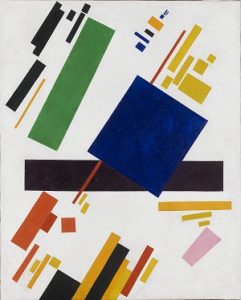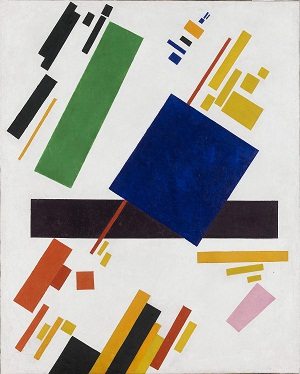Suprematism, a revolutionary art movement founded by Kazimir Malevich in the early 20th century, marked a decisive break from representational art.
Rooted in geometric abstraction, it focused on expressing pure artistic feeling through basic forms-circles, squares, and lines-often in limited colors.
Emerging in Russia around 1913, Suprematism aimed to transcend the physical world and evoke the spiritual through simplicity and clarity of form
While Malevich remains the most prominent name associated with the movement, many other artists contributed significantly to its development and legacy.
Below are ten renowned Suprematist artists and their key works.
1. Kazimir Malevich – Black Square (1915)
The cornerstone of Suprematism, Black Square symbolizes a break from the past and the beginning of a new artistic language.
First exhibited in 1915, Malevich described this stark black square on a white background as the “zero point of painting”-a pure abstraction devoid of objectivity.
2. El Lissitzky – Beat the Whites with the Red Wedge (1919)
A student of Malevich, Lissitzky combined Suprematist aesthetics with political propaganda.
This work uses geometric shapes to convey the Bolsheviks’ victory over anti-communist forces.
The red wedge piercing a white circle became a powerful visual metaphor.
3. Olga Rozanova – Non-Objective Composition (1918)
Rozanova was one of the few female pioneers of the Russian avant-garde.
Her Non-Objective Composition explores color dynamics and shape interplay with a unique softness that contrasts with the often-rigid geometry of Suprematism.
4. Lyubov Popova – Painterly Architectonic (1918)
Popova’s work fused the energy of Futurism with the clarity of Suprematism.
In Painterly Architectonic, bold planes of color intersect in a composition that hints at architecture while remaining abstract and expressive.
5. Ivan Kliun – Suprematist Composition (c. 1915-20)
Kliun, a close associate of Malevich, focused on exploring the balance of forms.
6. Nikolai Suetin – Suprematist Porcelain Plate (1923)
Suetin applied Suprematist design principles to ceramics, particularly porcelain.
7. Ilya Chashnik – Suprematist Composition (1922)
Chashnik was a painter and designer whose work exemplified Suprematism’s strict geometry and radical abstraction.
8. Alexander Rodchenko – Non-Objective Painting No. 80 (1918)
While Rodchenko later shifted toward Constructivism, his early works show a strong Suprematist influence.
9.Jean Pougny (Ivan Puni) – Suprematist Relief-Sculpture (1915)
Pougny combined Suprematist painting with sculptural form in works like Relief-Sculpture, breaking the boundaries between two-dimensional and three-dimensional abstraction.
10. Lazar Khidekel – Suprematist Composition (1920s)
The youngest member of Malevich’s circle, Khidekel extended Suprematist ideas into visionary architectural designs. His paintings, like his Suprematist Composition, present ethereal, otherworldly cities made from floating geometric forms.
Legacy of Suprematism
Though the movement was relatively short-lived-its influence waned after the 1920s, as Soviet Realism took hold-Suprematism laid the groundwork for modern abstract art and design. Its legacy can be seen in everything from Bauhaus architecture to minimalism and conceptual art. Suprematism was not just an artistic style; it was a radical rethinking of art’s purpose in a changing world.
The article contains sponsored affiliate links from Amazon to valuable resources.



